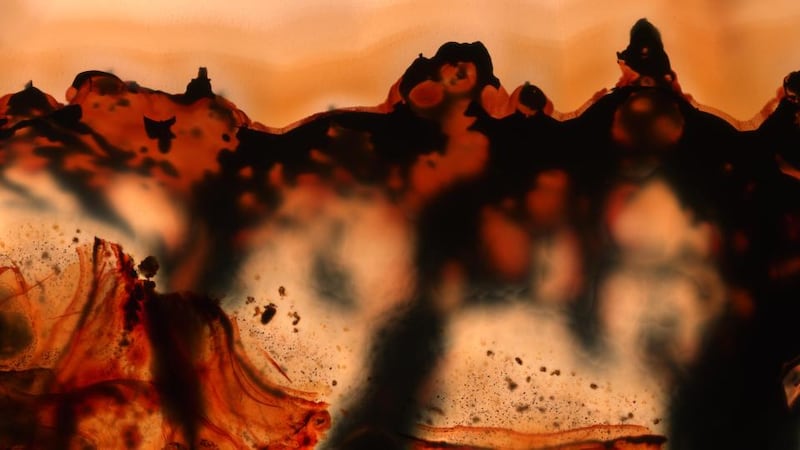Prof Richard Weston is not your average fashion designer. The prize-winning architect has written several books, including a monograph on architect Jørn Utzon, whose best-known work is the Sydney Opera House, and is chairman and professor of architecture at the Welsh School of Architecture at Cardiff University. He's a bit of a geek and in love with nature's inner beauty so, rather than championing florals or fauna, he prefers to show off what lies beneath.
After winning department store Liberty's Best of British open call, he became the break-out star of the 2011 BBC series, Britain's Next Big Thing . British Vogue described him as "fashion's most unexpected new design star".
The 59-year-old has entranced the fashion world with his sail-sized printed silk scarves inspired by scanned slices of fossil, stone and mineral. All these minerals have seen a bit of life, he explains. "They've been heated, cracked. They're not perfect. Fashion, in contrast, is intimidatingly perfect. But blemishes, faults, inclusions and impurities are what make these slices of nature exquisite." From an early age what he describes as "the hidden order of nature" has fascinated him. He was brought up in Leicester where he recalls his father being a "fanatical gardener". He attended Wyggeston Boys Grammar School (now Queen Elizabeth Sixth Form College), David Attenborough 's alma mater.


Weston started to explore the secret lives and structures of ammonites, fossils and minerals on an Epson 6400 DPI photo scanner, a side of them we don’t see in the everyday.
“People’s response to the images has been nothing short of phenomenal,” he says.
He's not content with using his discoveries on scarves, however. He has printed agate onto glass to create a screening exterior on Camden House, a property designed by Andy Taylor of Patel Taylor; he has a range of wallpapers being launched by Liberty this summer and Johnson Tiles are making beautiful large format ceramic tiles that feature agates as you've never seen them. He is also hoping to create rugs and wall hangings.
These new prints also feature a home-cum-studio he’s building in Wales. In the bathroom, he’s hoping to use calcium rhomboid scans either on tiles or on silk behind glass.
Graded book shelves the height of the living room will come with moveable panels to hide less interesting tomes from sight. These panels will be printed with corundum, a crystalline form of aluminium oxide. Fabric upholstered chairs will show off a meteorite’s inner beauty and one room is being designated as a cabinet of curiosities. He plans to fill it with inspiring minerals and “fascinating things”.
He wants us all to be able to walk on the moon so he's had a slice of moon rock from Apollo 13 , 30 microns thick, photographed by a polarising light microscope at the Open University in Milton Keynes, the only microscope in the world capable of capturing that piece of history's dark side.
“The beauty of this rock is that it is almost as old as the earth but because of the conditions on the moon – no water, no wind – it remains unchanged, uneroded. It is the purest rock you can find,” he says.
His enthusiasm is infectious. “In principle, we can do anything with these designs. Anything a customer wants.”
You can buy his beautiful scarves at Brown Thomas, Dublin, Cork, Limerick and Galway. Price €199.
See westonearthimages.com











